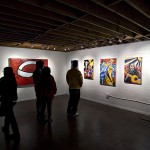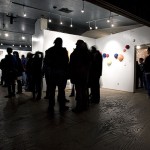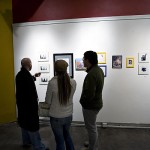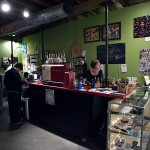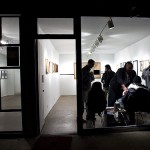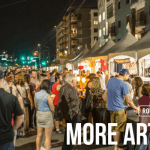Art Detour may have been a month ago, but that doesn’t mean we can’t start anticipating Art Detour 2010. With a smaller crowd due to ever-growing First Friday buzz, some wrote off Art Detour 2009. Not so fast, says Sloane Burwell, President of Artlink, organizers of First Friday and Art Detour.
“This was the first year that the Web 2.0 universe — Twitter, Facebook — was just going crazy for First Friday and Saturday night parties,” Burwell says. “First Friday was packed. It was dead on Saturday, but the parties Saturday night were packed, and the buyers came out on Sunday.”
Overall, Burwell claims that sales were actually up in 2009 compared to previous Detours, and it reported the biggest First Friday turnout ever, near 30,000 attendees.
“Art Detour needs to morph and change. We have First Fridays and Third Fridays, and people say, ‘Why do I need to come out to Art Detour?’ That’s a fair question.”
Ideas are vague for the time being, but Artlink is toying with adding restaurant participation and a strong live music element to the 2010 incarnation. More than anything, Burwell wants to bring the focus back to fine art.
“Artlink has gotten critiques from many members that First Friday is a party, not an arts event anymore,” Burwell says. “It’s kind of hard to argue with that. I love that it’s thematically themed with art, but that doesn’t help spaces stay open.”
One big critique is that Artlink hasn’t collaborated enough with like-minded organizations such as Roosevelt Row and art institutions like the Heard Museum.
“I’m glad that I’m able to explain,” Burwell says. “Museums can’t be involved in Art Detour because it has to be a free event. Anytime there’s a free event at a museum, someone has to pay for people going in the door. They do that through corporate sponsors. For groups like the Heard or the Art Museum to have two more free days on top of First Friday, it doesn’t work for them. There’s not enough cash in the nonprofit sector.”
Burwell says neighborhood organizations like Roosevelt Row and 7th Avenue Merchants Association are close confidants, though they don’t work in tandem. Artlink members own space on Roosevelt Row and the organization provided shuttles for the 7th Avenue street festival that coincided with Art Detour.
“We’re hoping next year [7th Avenue Merchants] doesn’t want to do the same weekend,” Burwell says. “It really hurt our Saturday.”
Burwell says the Heard Museum’s art festival that weekend, a paid event, catered to a different clientele and wasn’t competition.
On the flipside, Artlink is working with the Visitors and Convention Bureau and the State of Downtown Projects to really push the idea that Phoenix is an arts hotspot. Burwell hopes to garner national attention to Art Detour and make it into a destination event for out-of-towners.
“It would be so much easier if we could all work full time on Art Detour, but we’re all volunteers,” Burwell says of the Artlink staff. “Cities have big art fairs, and people fly in for them, and there’s no reason that can’t happen here.”
Still, Burwell is encouraged by downtown’s growth, and the growth of Art Detour. She says that attendees use the Detour weekend to venture to galleries and areas they don’t normally see on First Fridays. With well over 10,000 attendees, she feels the foundation is solid. She cites needs down the line: an Artlink gallery, its own shows, a full-time director and an educational component. Burwell wants to see Artlink-sponsored scholarships to both artists and schools.
In the end, it comes down to the clientele: “We love the fact that Phoenix has a great art reputation, but people need to buy art,” Burwell says. “If you own a gallery or a shop, you shouldn’t have to work 17 jobs to survive. That’s one of the goals — start buying!”




